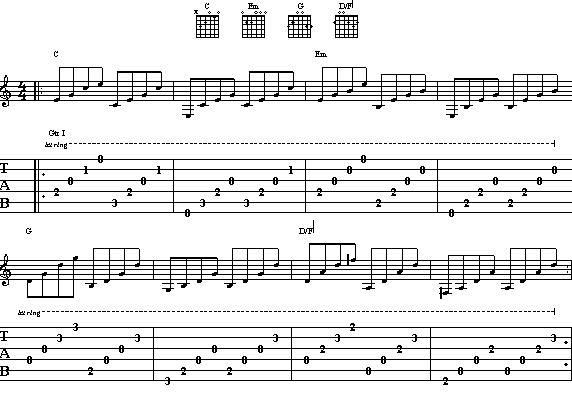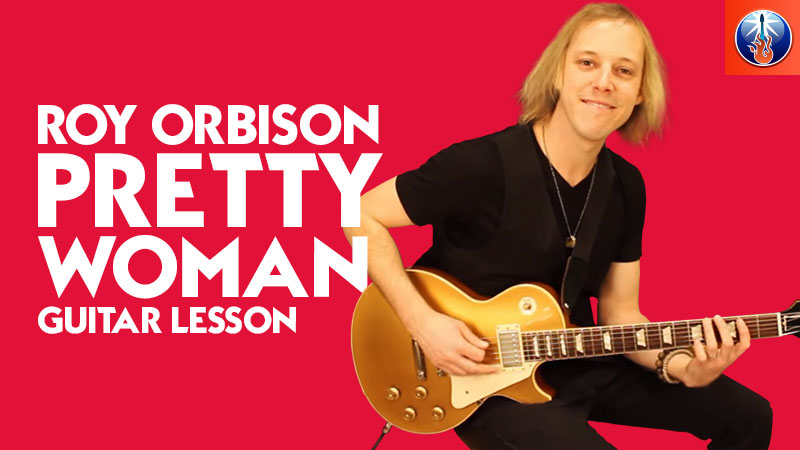Hey, this is Claude Johnson with Guitar Control, I want to continue on in our Chord Styles of the Masters mini series. I asked you guys what guitar master you want to learn from next. I got hundreds of comments on the blog; appreciate that. And one name kept coming up over and over, and that was Jimmy Page.
Jimmy Page had so many different tricks. He had Celtic influences, country blues styles, he used power chords, barre chords, picking patterns, open tuning, you name it. I can only scratch the tip of the iceberg in one lesson, but today I want to cover two of his favorite techniques. One is using single note riffs, the other is using open strings. Let me show you a couple examples from each one. The first one being single note riffs.
Here’s the first example. This is from the song “Heartbreaker” and we’re basically using the add in the passing note, which is the E flat. And, of course, we’re doing it down here with the open string. Then it modulates up to the key of B. Very cool.
So here’s the next example. This is from the song “Black Dog” and again, we’re using the A pentatonic with a passing tone. In this case we’re using the major 7th. This is kind of an unusual tone for a minor feel, for a minor key, but it works really well here.
Again, with this song, it goes to another key. So after we do this, we go up to the key of E, and then back to A. Again, a very basic technique, just riffing on the scale. The important thing here is that you have like a strong melody. Also, with these riffs, after it does the single note thing, it goes into a chord. In both bases this is going into an A major chord. Just right into A major.
Now, you can use this technique to come up with your own licks, your own riffs, and just use the same principle. Pick any key and just use notes out of the pentatonic scale, maybe with some passing tones, and just try to come up with something melodic.
For example, let’s take the key of G. Here’s a riff for you. Let me try playing that twice and then I’m move it up to A, move it back and I’ll try to finish with maybe some power chords. Here we go.
Not as epic as Jimmy Page, but — and you’ve got to keep in mind some of these riffs, they’re classics because of the whole picture of everything that’s going on in the song: the vocals, the melody, all the different parts.
The next technique I want to show you is open strings. Let’s take the song “Cashmere”. Now, on “Cashmere” Jimmy Page uses an open tuning called DADGAD, which is basically from the bottom to the top, D-A-D; G-A-D. I’m not going to bother with that right now because I just want to — I don’t want you distracted or get complicated with that. I’m going to just show you this riff, just using two strings, the D-string and the G-string. So we don’t need to worry about the other strings. I’m just going to show you this principle.
Open D and then I’m going to fret this, 2nd fret of the G-string. So the riff goes like this. Again, this is not the actual real “Cashmere” riff because we’d actually be using more strings and hitting that low D-string in between like a syncopated thing. We’re not going to worry about that. Even just using two strings, it sounds pretty cool. So you can do a lot. Basically the open
string acts as like a drone effect and you can come up with some very full-sounding stuff.
What we’re doing here is we’re starting on the 2nd fret on the G-string and then we’re just going up one fret at a time, chromatically, so 2nd to the 3rd, 4th, 5th and then the 7th.
Here’s another example using open strings. This is from “Dancing Days”
and we’re using the open G-string and then on the B string we’re going
to hammer-on from the 2nd fret to the 3rd fret and then pull-off to the
open string. Again, I encourage you to use these techniques to come up
with your own songs, your own riffs.
We saw an example with the open D-string, the open G-string; let’s just
go to the open A string just to be different. A good place to start is always the 5th. If you have an open string, start at the 2nd fret. You can just put that anywhere. Play around with it; see what you can come up with.
All right, guys. Thanks for checking out the lesson; I hope you enjoyed it. I encourage you to check-out our products page to check-out all of our cool
DVD courses. Just go to guitarcontrol.com/courses and you can see a bunch
of cool stuff. So check it out. And that’s about it. Have a great day and I’ll catch you next time.



